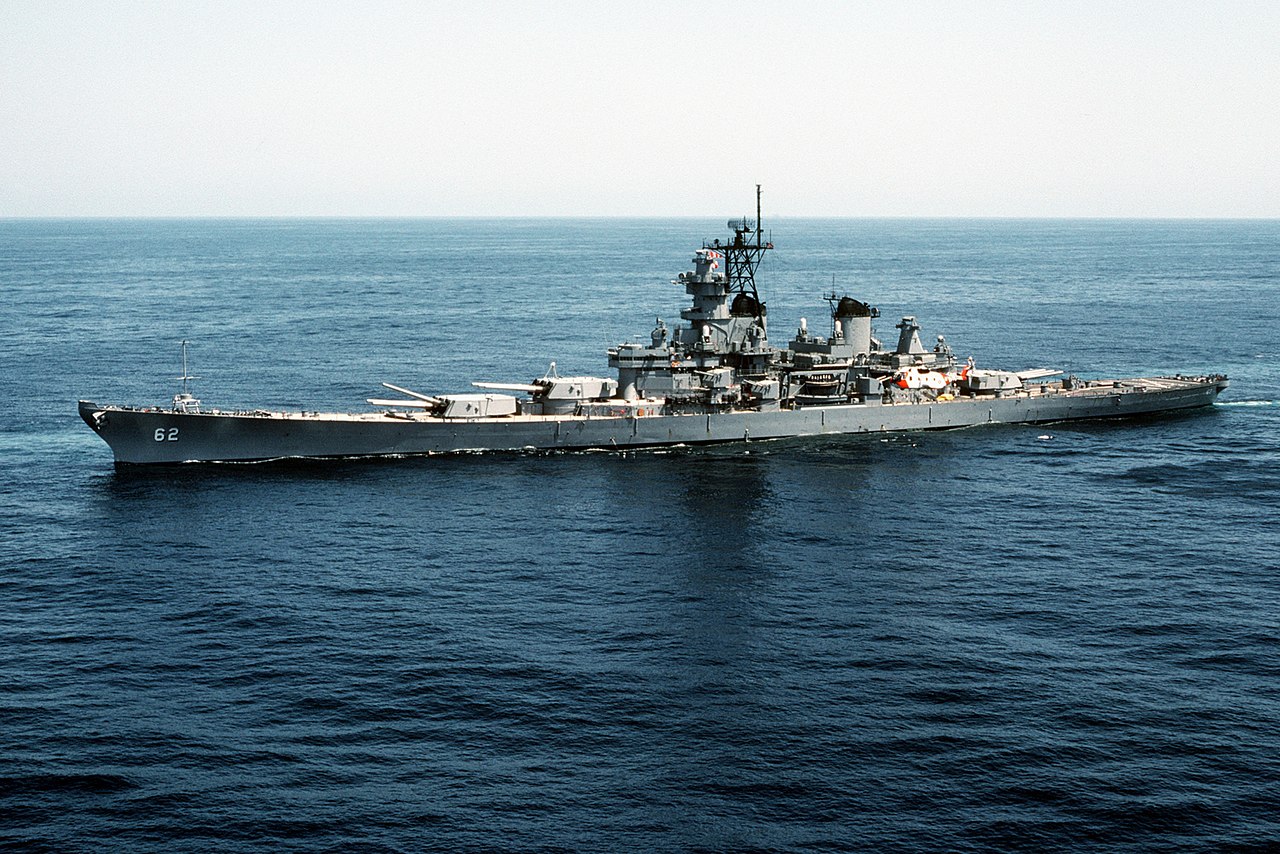
USS New Jersey is America’s Most Decorated Battleship
May 6, 2024 No Comments
The USS New Jersey (BB-62) is an Iowa-class battleship renowned for its extensive service in the U.S. Navy, seeing action in World War II, the Korean War, the Vietnam War, and during the Cold War.
Advertisement
As America’s most decorated battleship, it earned numerous commendations, including 19 battle stars and a Navy Unit Commendation.
Today, it serves as a museum ship in Camden, New Jersey, offering historical tours and educational programs to the public.
Design of the USS New Jersey
Ordered in 1939 as part of a naval expansion act that aimed to bolster the U.S. Navy in response to global military developments, the New Jersey’s design was a response to both current and future naval threats. With a displacement of about 45,000 tons, it was among the largest battleships ever built, yet engineered to maintain speeds that matched much lighter cruisers. This combination of speed and power enabled it to escort fast carrier task forces and engage in line-of-battle formations.
Advertisement
The New Jersey’s keel was laid down at the Philadelphia Naval Shipyard on September 16, 1940. This shipyard was selected for its extensive experience and capacity to handle such a monumental project. The construction of the battleship involved thousands of workers and was marked by rigorous attention to detail, given the complex nature of its design and armament.
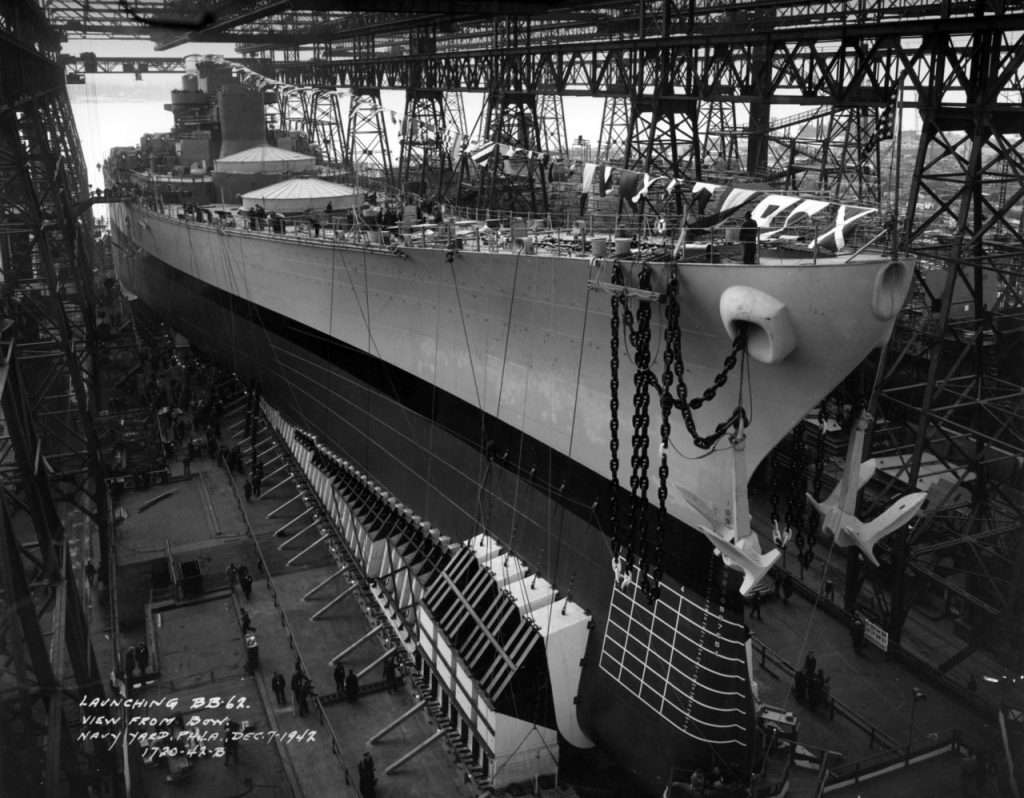 Launch of the USS New Jersey, 7 December 1942.
Launch of the USS New Jersey, 7 December 1942.
Armament was a critical aspect of the New Jersey’s design, equipped primarily with nine 16-inch (406 mm) Mark 7 guns arranged in three triple turrets. These guns were capable of firing projectiles weighing as much as 2,700 pounds to a range of up to 23 miles, allowing the ship to strike distant targets with remarkable accuracy. Secondary armament included twenty 5-inch (127 mm) guns, which were effective against both surface and air targets, enhancing the battleship’s defensive capabilities.
The New Jersey also featured substantial armor plating, with belt armor reaching up to 12.1 inches thick and turret armor up to 17.3 inches. This heavy armor was designed to withstand hits from enemy shells and protect vital areas such as ammunition magazines and the propulsion system.
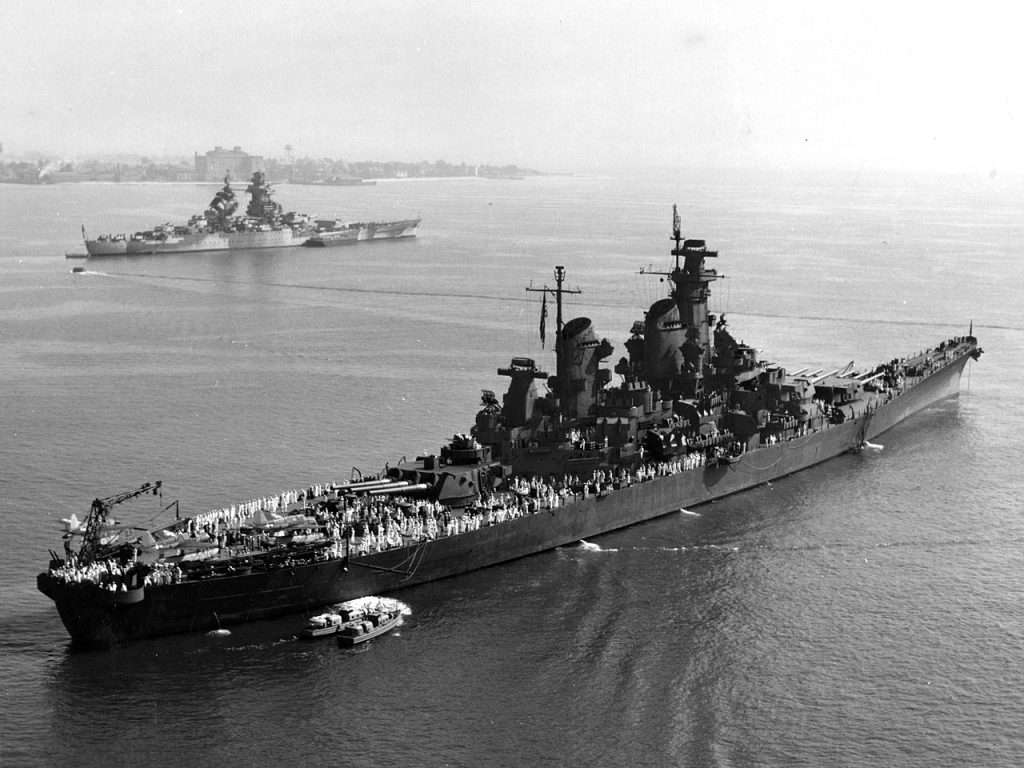 USS New Jersey anchored next to the French battleship Richelieu, 7 September 1943.
USS New Jersey anchored next to the French battleship Richelieu, 7 September 1943.
The ship’s propulsion system itself was a marvel of the era, consisting of four geared steam turbines that generated a total of 212,000 shaft horsepower, driving four screws. This power plant was capable of propelling the ship at speeds of up to 33 knots (61 km/h), making it one of the fastest battleships in the world.
The USS New Jersey was launched on December 7, 1942—coinciding with the first anniversary of the Pearl Harbor attack.
USS New Jersey During WWII
The USS New Jersey (BB-62) began its storied career in World War II, where it quickly became a critical asset in the U.S. Navy’s Pacific Fleet. Commissioned into service in May 1943, under the command of Captain Carl F. Holden, the battleship was immediately dispatched to the Pacific theater, arriving in time to play a vital role in several key engagements that helped turn the tide of war in favor of the Allied forces.
One of the New Jersey’s first major assignments was to provide protection for aircraft carriers, which were by then recognized as the backbone of naval strategy in the Pacific. Aircraft carriers, vulnerable to air and submarine attacks, relied on the formidable anti-aircraft capabilities and thick armor of battleships like the New Jersey for defense. This symbiotic relationship was crucial during the island-hopping campaigns across the Pacific, where air superiority was paramount.
Advertisement
The battleship’s first combat operation was in the Gilbert and Marshall Islands campaign, where it provided gunfire support during the invasions of Tarawa and Kwajalein. By bombarding shore installations and suppressing enemy artillery, the New Jersey played a decisive role in securing these islands. Its powerful 16-inch guns were used not just for shore bombardment but also in engaging enemy ships during several naval confrontations.
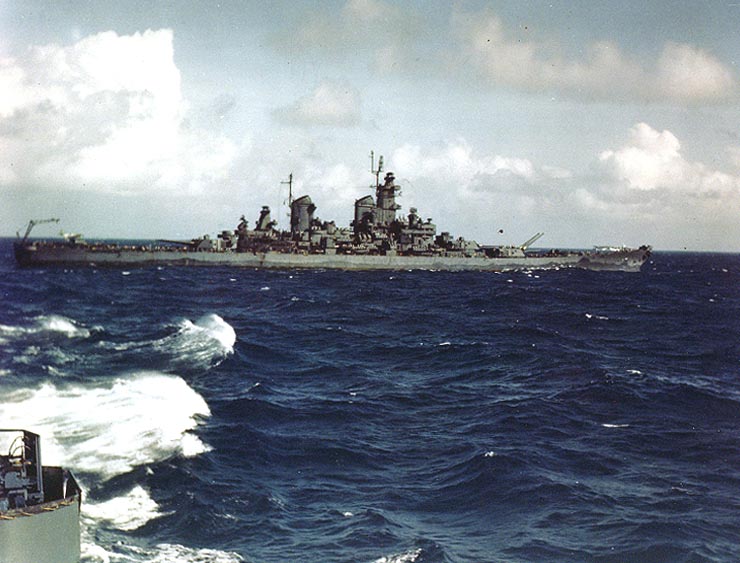 USS New Jersey in the Pacific during the Second World War.
USS New Jersey in the Pacific during the Second World War.
One of the most significant battles in which the USS New Jersey participated was the Battle of the Philippine Sea in June 1944. This major naval battle, sometimes referred to as the “Great Marianas Turkey Shoot,” involved a series of air and sea engagements that ended in a decisive victory for the United States. The New Jersey’s role was multifaceted: it provided anti-aircraft cover, screened aircraft carriers from enemy submarine and surface threats, and used its main batteries to engage Japanese ships at range.
Following the Battle of the Philippine Sea, the USS New Jersey continued to serve as a flagship for Admiral William F. Halsey, Commander of the 3rd Fleet. As a flagship, it was at the forefront of fleet operations, coordinating complex maneuvers and assaults. In October 1944, it participated in the Battle of Leyte Gulf, the largest naval battle of World War II and, by some measures, the largest naval battle in history.
Read More The Longest-Range Naval Hit – The Record Belongs to Two Ships
Here, the New Jersey again provided critical gunfire support and protection for the carriers, playing a key role in the defeat of the Japanese fleet and effectively securing the American foothold in the Philippines.
Throughout the remainder of the war, the USS New Jersey was involved in operations targeting Japanese bases throughout the Pacific, including Formosa, the coast of Indo-China, and the Japanese home islands. These operations not only crippled Japanese war-making capabilities but also paved the way for the eventual Allied victory in the Pacific.
 USS New Jersey on her way to join the mothball fleet in 1948.
USS New Jersey on her way to join the mothball fleet in 1948.
Advertisement
The Korean War
The end of World War II in 1945 led to a rapid demobilization and restructuring of U.S. military forces, including the Navy. The USS New Jersey was decommissioned in June 1948 as part of this broader reduction in military expenditures and the shift toward a peacetime military posture. During its brief decommissioning, the battleship remained in the Reserve Fleet, also known as the “Mothball Fleet,” where it was maintained in a state of readiness should it be needed again.
Read More Fort Funston had 16-inch Battleship Guns
The outbreak of the Korean War in June 1950 prompted a swift reassessment of U.S. military needs, including naval power projection. The North Korean invasion of South Korea required an immediate military response to support United Nations forces on the peninsula. In response, the USS New Jersey was recommissioned on November 21, 1950, under the command of Captain David M. Tyree, signaling its return to active duty to meet the exigencies of the conflict.
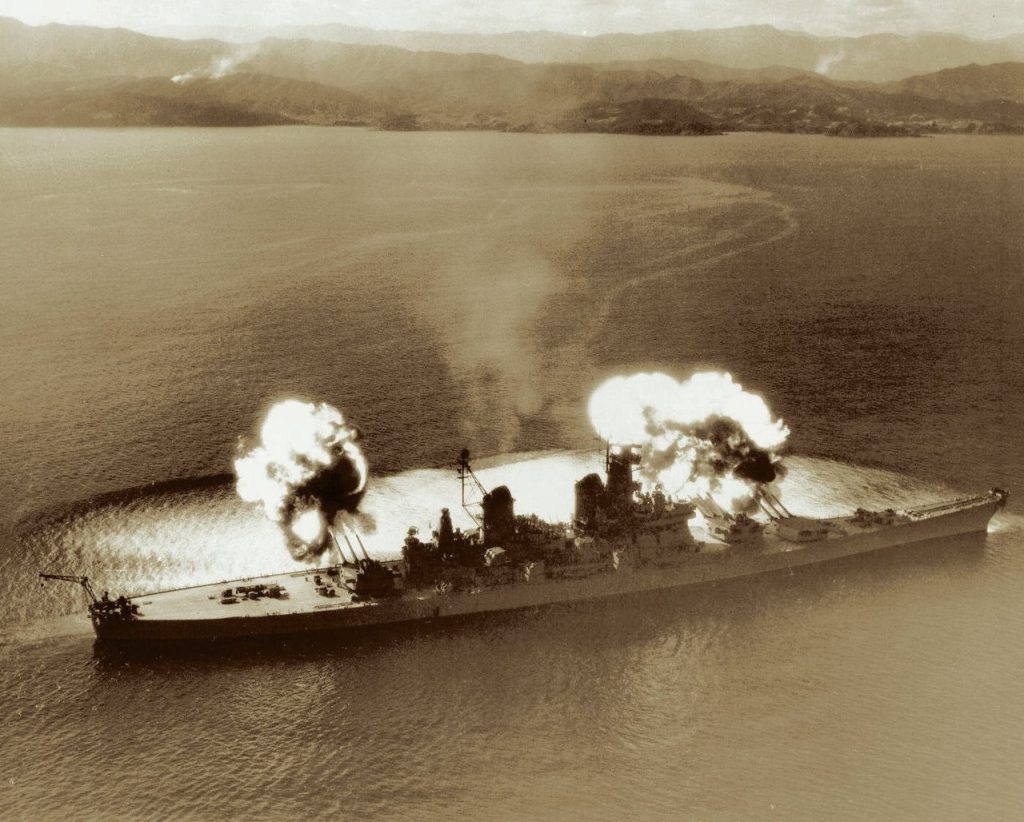 USS New Jersey fires her nine 16 inch guns on enemy targets in Korea, 10 November 1951.
USS New Jersey fires her nine 16 inch guns on enemy targets in Korea, 10 November 1951.
Upon its arrival in the Korean theater in May 1951, the USS New Jersey immediately assumed a critical role as a platform for heavy artillery. Given the rugged terrain and entrenched positions of the North Korean and later Chinese forces, the battleship’s ability to deliver high-volume, precise naval gunfire was invaluable. The New Jersey’s 16-inch guns, capable of firing shells weighing as much as 2,700 pounds over a distance of up to 23 miles, allowed it to engage enemy targets from a safe distance, beyond the reach of most enemy artillery.
The battleship’s primary mission was to provide naval gunfire support to United Nations ground forces. This support was not just limited to direct bombardment of enemy positions but extended to interdiction of supply lines and communications, as well as specific requests for fire support during major offensives and defensive operations. One notable example of its effective fire support was during the Hungnam Evacuation in December 1950, where it played a key role in covering the retreat of UN forces and South Korean civilians.
 USS New Jersey and USS Missouri pictured at Norfolk Naval Base, 1954.
USS New Jersey and USS Missouri pictured at Norfolk Naval Base, 1954.
The USS New Jersey was particularly effective during the sieges and bombardments of coastal cities like Wonsan, where its firepower could be leveraged to destroy enemy fortifications, bunkers, and troop concentrations.
Read More The USS Minneapolis Had a Bow Made From Coconut Trees
After the armistice in July 1953, the USS New Jersey continued to serve in the active fleet for a short period before being decommissioned again in 1957. Its role during the Korean War had demonstrated the adaptability of battleship platforms to modern warfare, albeit hinting at the beginning of a shift towards more versatile and cost-effective naval assets, such as aircraft carriers and submarines.
The Vietnam War
The decision to reactivate the USS New Jersey for service in Vietnam was influenced by the unique demands of the conflict, which included the need for sustained, heavy bombardment to support ground troops and disrupt North Vietnamese supply lines.
Read More The USS Texas ‘Sank’ Herself on D-Day
The battleship was ideally suited for this role due to its massive firepower and ability to deliver precise and devastating artillery strikes from offshore positions. After undergoing modernization, which included updates to its radar and fire control systems to enhance its accuracy and operational capabilities, the New Jersey was dispatched to Southeast Asia.
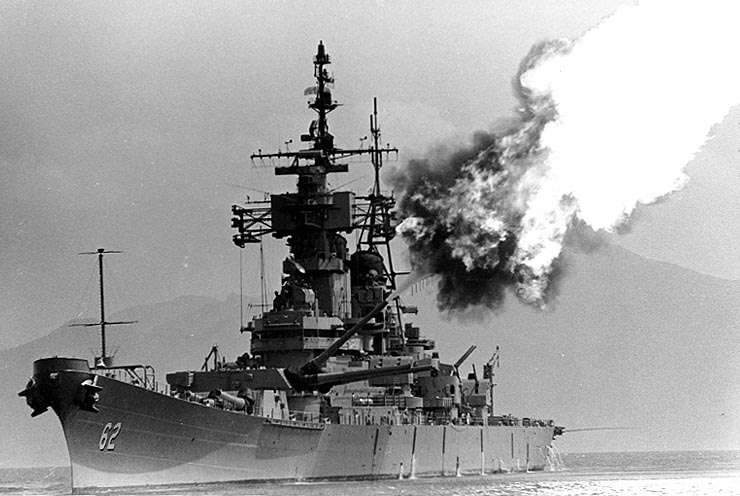 Firing her guns on enemy positions on the South Vietnamese Coast.
Firing her guns on enemy positions on the South Vietnamese Coast.
Advertisement
Upon its arrival in Vietnam, the USS New Jersey was assigned to conduct coastal bombardment missions. Its primary targets included enemy troop concentrations, artillery sites, and transportation routes. The ability of the New Jersey to fire its 16-inch guns with remarkable precision allowed it to destroy hardened bunkers and fortifications that were otherwise resistant to smaller artillery and air strikes. This made the battleship an invaluable asset in operations designed to weaken the enemy’s logistical and operational capacity.
One of the most notable aspects of the USS New Jersey’s service in Vietnam was its involvement in Operation Sea Dragon, a mission aimed at interdicting North Vietnamese coastal logistics. During these operations, the New Jersey effectively engaged and destroyed enemy supply vessels, storage facilities, and waterborne logistics craft.
Read More The Turret Explosion on the USS Iowa
Additionally, the battleship provided fire support for ground operations, notably during the Tet Offensive, where it played a critical role in repelling enemy forces and providing cover for U.S. and South Vietnamese troops.
Advertisement
 USS New Jersey in drydock in 1967.
USS New Jersey in drydock in 1967.
After Vietnam, the USS New Jersey was again decommissioned in 1969 as the U.S. Navy continued transitioning toward a focus on air power and missile technology. However, its story did not end there. In the early 1980s, under President Ronald Reagan’s administration, the New Jersey was recommissioned once more as part of a strategic initiative to expand the Navy’s global presence and combat capability.
This period of service included significant modernizations, such as the addition of Tomahawk and Harpoon missile systems, which enhanced its strike capabilities and allowed it to engage in modern naval warfare where long-range and precision were paramount.
The Final Decommissioning of the USS New Jersey
The USS New Jersey, after decades of distinguished service, was finally decommissioned for the last time on February 8, 1991. This marked the end of its active duty, but not the end of its story.
Read More USS Kentucky – The Battleship That Never Was
The decision to decommission the USS New Jersey came in the post-Cold War era, during a period of significant military downsizing and realignment. As newer technologies and warfare strategies emerged, including the increasing reliance on air power and missiles, the role of traditional battleships like the New Jersey became less central to naval operations.
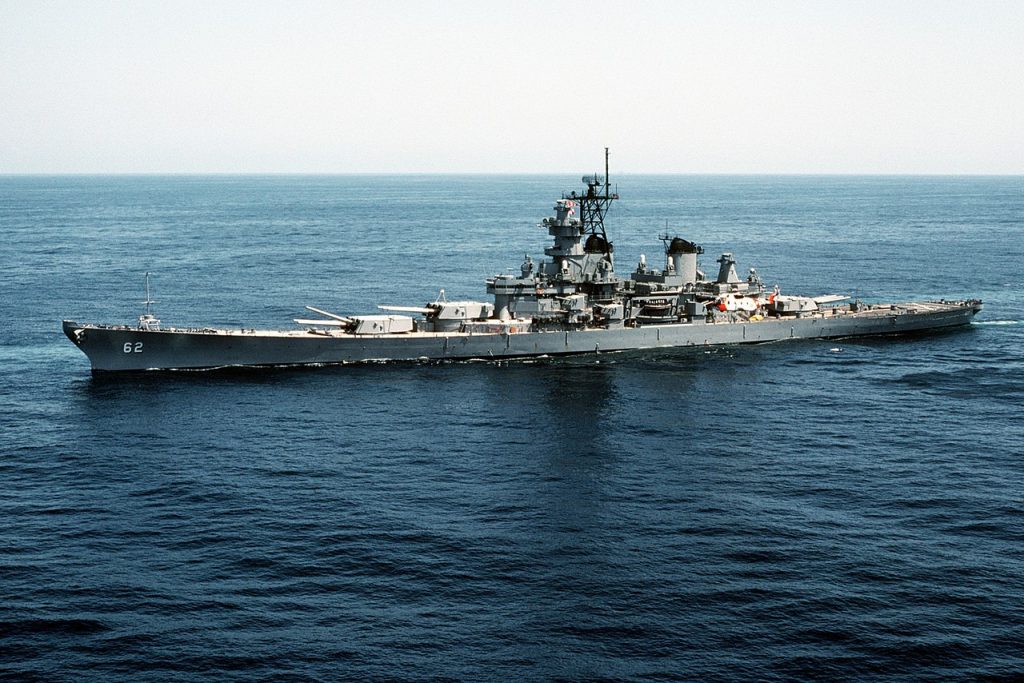 Underway in 1983.
Underway in 1983.
Its decommissioning was part of a broader move toward more versatile and cost-effective naval forces, yet it also marked a moment of reflection on the value and impact of such formidable ships in U.S. naval history.
Read More That Time the Prinz Eugen Collided With the Light Cruiser Leipzig
Following its decommissioning, the USS New Jersey began a new chapter as a museum ship. It was donated to the Home Port Alliance in Camden, New Jersey, to serve as a floating museum. This transition was not merely about preserving a naval artifact; it was about retaining a piece of living history.
The battleship was opened to the public in October 2001, allowing visitors from around the world to explore its decks, turrets, and living quarters, providing an immersive experience into life at sea and the operations of one of America’s most storied battleships.
News
The Hanging Temple: China’s 1,500-Year-Old Cliffside Marvel of Faith and Engineering
The Hanging Temple: China’s 1,500-Year-Old Cliffside Marvel of Faith and Engineering Perched precariously on the cliffs of Mount Heng in Shanxi Province, China, the Hanging Temple, also known as Xuankong Temple, Hengshan Hanging Temple, or Hanging Monastery, is an architectural…
The Willendorf Venus: A 30,000-Year-Old Masterpiece Reveals Astonishing Secrets
The Willendorf Venus: A 30,000-Year-Old Masterpiece Reveals Astonishing Secrets The “Willendorf Venus” stands as one of the most revered archaeological treasures from the Upper Paleolithic era. Discovered in 1908 by scientist Johann Veran near Willendorf, Austria, this small yet profound…
Unveiling the Maya: Hallucinogens and Rituals Beneath the Yucatán Ball Courts
Unveiling the Maya: Hallucinogens and Rituals Beneath the Yucatán Ball Courts New archaeological research has uncovered intriguing insights into the ritual practices of the ancient Maya civilization. The focus of this study is a ceremonial offering found beneath the sediment…
Uncovering the Oldest Agricultural Machine: The Threshing Sledge’s Neolithic Origins
Uncovering the Oldest Agricultural Machine: The Threshing Sledge’s Neolithic Origins The history of agricultural innovation is a fascinating journey that spans thousands of years, and one of the earliest known agricultural machines is the threshing sledge. Recently, a groundbreaking study…
Nara’s Ancient Sword: A 1,600-Year-Old Protector Against Evil Spirits
Nara’s Ancient Sword: A 1,600-Year-Old Protector Against Evil Spirits In a remarkable discovery that has captured the attention of archaeologists and historians alike, a 7.5-foot-long iron sword was unearthed from a 1,600-year-old burial mound in Nara, Japan. This oversized weapon,…
The Inflatable Plane, Dropped Behind the Lines for Downed Pilots
Experimental The Inflatable Plane, Dropped Behind the Lines for Downed Pilots The Inflatoplane from Goodyear was an unconventional aircraft developed by the Goodyear Aircraft Company, a branch of the renowned Goodyear Tire and Rubber Company, also famed for the Goodyear…
End of content
No more pages to load











